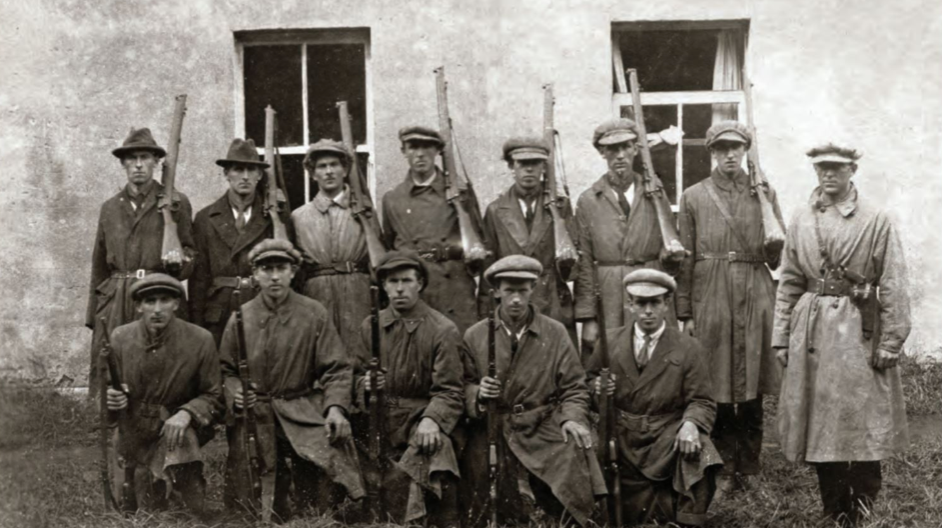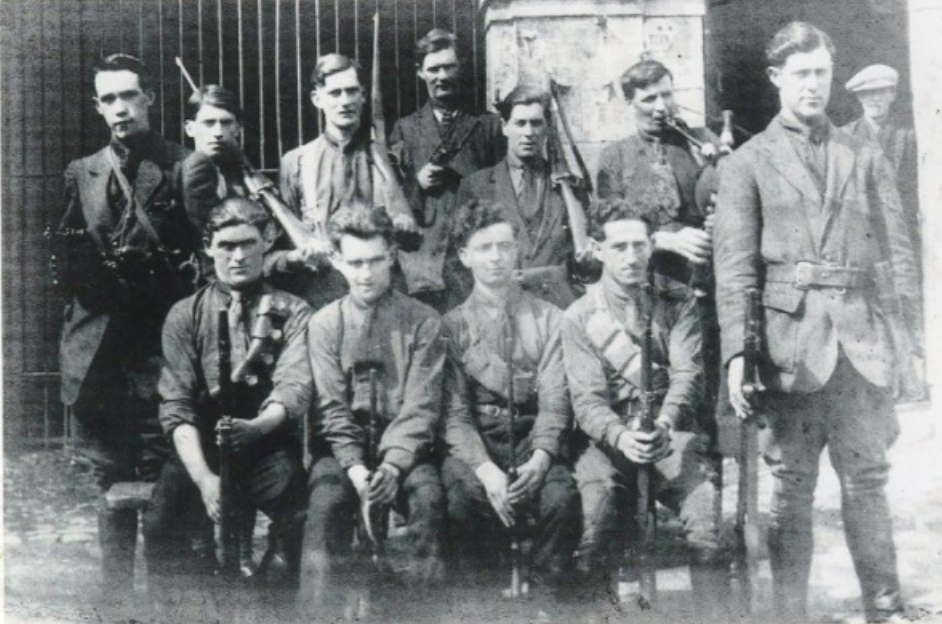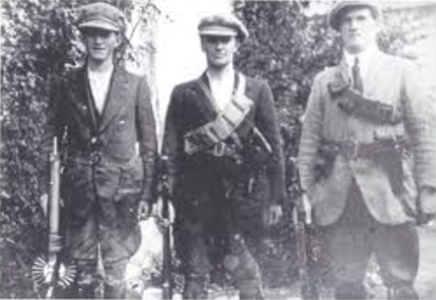22nd July - No Letter to Poppy
Secret diary: Miss Brennan arrives
Official diary (22nd July): No entry
Location: Dr Corboy’s House Brookville Caherconlish
The Auckland Star in New Zealand quoted the “Daily Express” which had somehow got hold of a description of what it was like for CHTL being held captive: one cannot be sure of its accuracy or whether there were various embellishments that were added to the tale as it was handed down as it is unlikely to have been from a first-hand account. It was printed after CHTL escaped:
General Lucas was confined in various dwellings and farmhouses in three counties. He was well treated and given comfortable accommodation, but was guarded night and day. The restrictions on his liberty during the first few days of his captivity in County Kerry were galling. Three guards with revolvers resting on their knees were stationed at his bedside. Others belonging to a rough peasant type were posted outside the windows of the house.
His personal guards, with whom General Lucas came more in immediate contact, were considerate, and evidently solicitous for his comfort. They spoke of their experiences in internment after the Easter rebellion of 1916, but General Lucas heard that the houses from which he was successively removed were subsequently searched by the police and military. His transfer was always made at night time, precautions being taken to prevent him ascertaining the locality.
Auckland Star, Volume LI, Issue 184, 3 August 1920, Page 5

Right from the start CHTL appreciated the kindness shown to him by those looking after him. He wasn’t that keen on some of those who sat with guns by his bedside in an intolerable show of over the top security; fearful that they might lose their trophy in another dramatic break for freedom. They too must have been uneasy as to how this situation was going to pan out. If the general escaped would he send in the troops to wipe them out?
CHTL had recently been in occupied Germany and had valued the Germans who had to give him accommodation, even more so when they willingly accepted Poppy as an extra guest: providing board and lodging for officer's wives wasn’t a requirement of the occupation.
Likewise he appreciated the Irish ladies who cooked, shopped, and washed for him; generally looking after him; and the hosts who might not have been too happy to suddenly have such an important, but not necessarily such a welcome, guest, foisted upon them often at short notice. CHTL was well aware of the potential jeopardy his presence posed to themselves and their families. He was amazed at the hospitality and that preparations had been made in advance for him.

This was very much a statement being made about how the IRA treated their 'prisoners' in contrast to the often brutal conditions the British kept their detainees in.
Again one has to remember that CHTL was a unique case. Had he been captured even a few weeks later, he would not have had such a comfortable experience and not have survived to tell the tale; as was the fate of virtually all other 'enemy' prisoners captured by the IRA. The 'War' become very bitter and there was no room for too much kindness from either side.
Huge efforts and great risks were taken to provide CHTL with the means to communicate with the outside world.
Meanwhile, whilst CHTL was learning about his captors’ political views and desire for a republic, in Whitehall there were communications and supply chain problems with the police in Ireland not getting the 5,000 revolvers that they’d urgently requested. One wonders why they needed so many, but then it was a regular event for Sinn Fein to help themselves to whatever arms that they could get hold of.
SECRETARY.
N.G.O.
This is a very serious matter, and I am bound to say reflects discredit on the department concerned. Exactly a month has passed since the request was received from Ireland for 5,000 revolvers for the police without effective action being taken. You are yourself acquainted with the orders of the cabinet on the subject of supplying the Irish government with everything that is demanded and with the special importance attached to promptitude. It will therefore be necessary to take disciplinary action against the officials concerned who have caused the delay. N.C.O. states that he issued instructions on 21/6/20 that “the revolvers should be issued at once and the question of payment discussed afterwards, and these instructions were passed to the branch concerned.” Who is the head of the branch concerned? Is it the fact that, having received urgent instructions to proceed with the issue from the N.C.O., he was content to ask Ireland whether belts and holsters were complete and let the matter rest until 19/7/20 without repeating his wire and without informing his chief? If so, he is unfit for his position and should be removed from it forthwith.
22//7/20.
Revolvers were the assassins’ choice: easily hidden and quick to fire at close range. The British picked up on the IRA’s use of small fire arms and began to also use them to ‘deal with’ those who opposed them. Later on in the year the revolver began to be used even more:

Over 180 civilians were killed as informers by the IRA, usually shot with revolvers at close range and dozens of police and military personal were similarly assassinated at close quarters – most famously on Bloody Sunday in November 1920 when 14 British officers or agents were assassinated in a single morning in Dublin. Covert state forces came to mimic the IRA’s methods of assassination and undercover RIC or Auxiliary ‘squads’ assassinated the mayors of both Cork and Limerick among many others..
The easily concealable handgun killed many victims of the Irish revolution on both sides.

Pistols in the hands of determined gunmen could be responsible for many more deaths than a heavily armed military unit with rifles and machine guns. One could instance Bloody Sunday in 1920 in which IRA Squad and Dublin Brigade assassins killed 14 British officers in one morning (mostly in their beds) without any combat taking place. The same was true for the shooting of informers which accounted for 180 or so IRA victims in 1919-1921.
According to Eunan O’Halpin, the number of civilians shot as informers by the IRA in 1919-21 was 183. (O’Halpin, Problematic Killing during the Irish War of Independence and its Aftermath: Civilian Spies and Informers, in Death and Dying in Britain and Ireland p329)
Bloody Sunday (Irish: Domhnach na Fola) was a day of violence in Dublin on 21 November 1920, during the Irish War of Independence. Thirty-two people were killed or fatally wounded: thirteen British soldiers and police, sixteen Irish civilians, and three Irish republican prisoners.
The day began with an Irish Republican Army (IRA) operation, organised by Michael Collins, to assassinate the ‘Cairo Gang’ – a team of undercover British intelligence agents working and living in Dublin. IRA members went to a number of addresses and killed or fatally wounded fifteen people: nine British Army Officers, a Royal Irish Constabulary (RIC) officer, two members of the Auxiliary Division, two civilians, and another man who is believed to have been an intelligence agent.
Later that afternoon, members of the Auxiliary Division and RIC opened fire on the crowd at a Gaelic football match in Croke Park, killing or fatally wounding fourteen civilians and wounding at least sixty others.That evening, three Irish republican suspects being held in Dublin Castle were beaten and killed by their captors, who said they were trying to escape.
Overall Bloody Sunday was considered a victory for the IRA, as Collins's operation severely damaged British intelligence, while the later reprisals did no real harm to the guerrillas but increased support for the IRA at home and abroad.
Wikipedia - Source
CHTL had already found out about ‘Sean’ fooling around with a revolver and shooting himself in the foot. There was a dangerous atmosphere building up where both sides became more trigger happy. Bloody Sunday was one such terrible example of lives being cheap, but tragically innocents ended up becoming victims as in Croke Park.
Blind Man’s Bluff
On a much lighter note: We don’t know who the ‘Miss Brennan’, was who arrived: there were quite a few who had connections with the holding of the general. We have no idea whether she was an adult or whether she was a young girl. It could have been a girl as ‘Miss Brennan’ would have been the way CHTL would have playfully addressed Ita or her sister. A child or even a female arriving would have lightened the atmosphere in the lodgings.
Conor Lenihan remembers his grandmother, Ita, showing him a photo of the general. To Conor’s horror the general was wearing a blindfold! Considering all that we know now, a hostage wearing a blindfold usually meant either he was about to be moved or that he was about to be shot. Ita was around 12 at the time and, full of the innocence of youth, had played with her siblings and the captive general. One of their favourite games was Blind Man’s Buff or Bluff! The children were unaware of the connotations of tying a blind fold on the general and the general in turn was quite happy to take part in the children’s game!


The game with Ita and the general took place in the back garden of the Smithstown House, where a very prickly Monkey Puzzle tree grew. Imagine the squeals of delight from the children when the blind fold wearing general stumbled close to the tree!
And so this incredible story continued to unfold with the juxtaposed pictures of men playing cards, drinking whiskey, enjoying games of tennis and croquet and fishing trips with their prisoner, whilst carrying guns. Even more extraordinary is a photo of a blindfolded hostage playing Blind Man’s Bluff with children!

